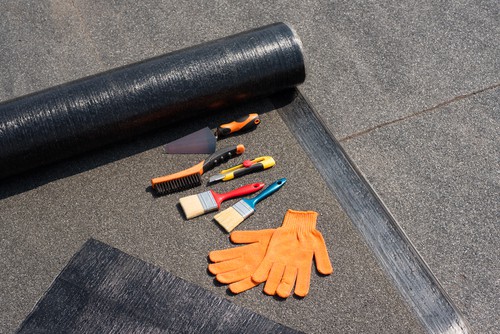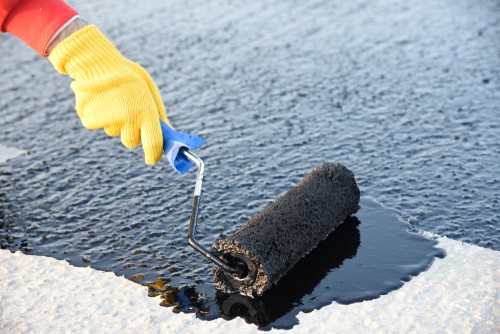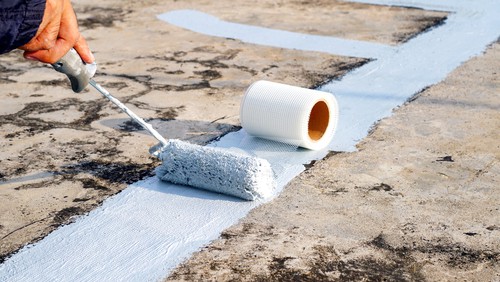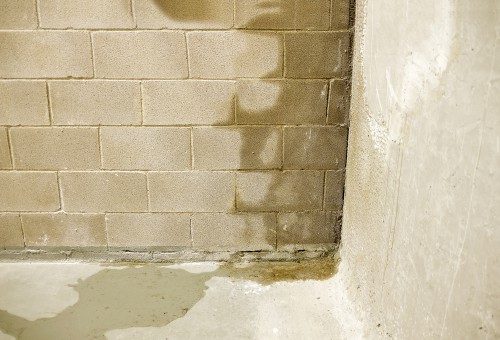
How Long Does Waterproofing Membrane Last?
October 25, 2022
The Cost Effectiveness Of Waterproofing Your Home Or Business
February 17, 20238 Most Common Waterproofing Mistakes People Often Make

8 Most Common Waterproofing Mistakes People Often Make. Waterproofing is an essential element of any building in the course of construction. A correctly installed waterproofing system can remain fully functional for about 10-15 years. Wrongly installed waterproofing can give rise to water leakages immediately after it gets into contact with water.
Therefore, it is crucial to avoid such waterproofing mistakes. It is vital for developers, contractors, and homeowners to know the intricacies of waterproofing and to recognize its importance. Let’s dive into the most common waterproofing mistakes many homeowners, developers, and contractors make and how to avoid them.
8 Most Common Waterproofing Mistakes People Often Make

They are only repairing cracks after the waterproofing
When it comes to waterproofing, it’s essential to fix any gaps in the surface before you start. This is because cracks will let water seep through and cause severe damage if left unchecked.
It is vital to ensure that any gaps in the surface are filled with a suitable filler and sanded down to ensure a smooth finish. If the crack is more comprehensive than 1/4 of an inch, it’s recommended to use a backer rod before filling it with a sealant. This will help to ensure a secure seal and prevent future leaks.
Applying a waterproofing membrane to a dirty surface

This is one of the most prevalent waterproofing mistakes many developers, homeowners, and waterproofing contractors often make. Using the membrane directly on a dirty surface can significantly reduce its lifespan. This is because dirt and debris can cause the membrane to deteriorate over time. This will lead to cracks, leaks, and other structural damage.
Before applying the waterproofing membrane, please ensure the surface is clean and free of any dirt, dust, or other contaminants. You can use a pressure washer to remove any dirt or debris on the surface, but it’s best to consult an expert to determine the best method for cleaning your particular surface.
By taking the time to properly clean and prepare the surface before applying the waterproofing membrane, you can ensure that your waterproofing system will last for years and provide maximum protection against water intrusion.
Not using a primer
When waterproofing a surface, it is necessary to use a primer before applying the waterproofing material. A primer helps to create a strong bond between the surface and the waterproofing membrane. Without a primer, the waterproofing membrane may not adhere properly and can lead to water leakage.
It’s essential to use the appropriate primer for the job. For instance, if you waterproof a concrete surface, you should use an acrylic or urethane-based primer. If you waterproof a metal surface, you should use an epoxy-based primer.
It is essential to follow the manufacturer’s instructions carefully during this process. This includes the required surface preparation and application methods. It is also crucial to ensure the primer is completely dry before applying the waterproofing membrane.
Using a primer can help ensure that your waterproofing membrane will adhere properly and protect your surface from water damage.
Injuring the waterproofing membrane after installation
If a waterproofing membrane is punctured or torn, water can seep through. Leading to extensive water damage. So, it is essential to ensure the waterproofing membrane is appropriately installed.
Also, avoid walking on the membrane after installation, as this could cause holes or tears. If you have to, remember to wear soft-soled shoes to minimize the risk of punctures or cuts.
Insufficient attention to pipes and penetrations
Failure to pay enough attention to pipes and penetrations is one of the most common mistakes people make when waterproofing a structure.
Any lines that penetrate through the waterproofing layer can create a potential entry point for water. It is, therefore, essential to ensure that all penetrations are sealed correctly. To effectively do this, use a special sealant for waterproofing and some mechanical fixing such as screws or nails.
Inadequate sloping causes water to stagnate

When waterproofing a structure, it is crucial to consider the angle of the surface of the water flow. If the character does not have a sufficient slope, it can cause water to stagnate and pool, leading to leaks and other issues.
To avoid this problem, properly build the surface’s slope when installing waterproofing materials. This will ensure that water flows away from the structure instead of collecting in certain areas and causing damage. On top of that, remember to check for any low spots where the waterproofing is installed so that water does not become trapped and cause problems.
Not allowing enough time for the waterproofing membrane to dry
Another common waterproofing mistake people often make is the failure to allocate adequate time for the waterproofing membrane to dry. This can cause several problems, including defective waterproofing and water damage.
Please allow at least 24 hours for the waterproofing membrane to dry. Depending on the weather and other conditions, the membrane may take more than 24 hours to dry completely. To make sure that you complete this step, it is essential to check the instructions that come with the waterproofing product and give enough time for the material to dry.
If you are in a hurry and cannot wait 24 hours, consider investing in a fan to help speed up the drying process.
Failure to conduct a water ponding test
Waterproofing a surface is only as effective as testing afterward. Water ponding tests are essential to any waterproofing job, yet many people still need to do them.
It is essential to do this test because it allows you to identify any weaknesses in the waterproofing membrane before problems arise. If done correctly, it can help to avoid costly repairs later on down the line. When conducting a water ponding test, please monitor the surface over time to detect any slow leaks or other signs of failure.
Conclusion
Now that we’ve covered the 8 common waterproofing mistakes people often make, we hope this article helps you! If you require any professional assistance, feel free to contact us today! Good luck!

